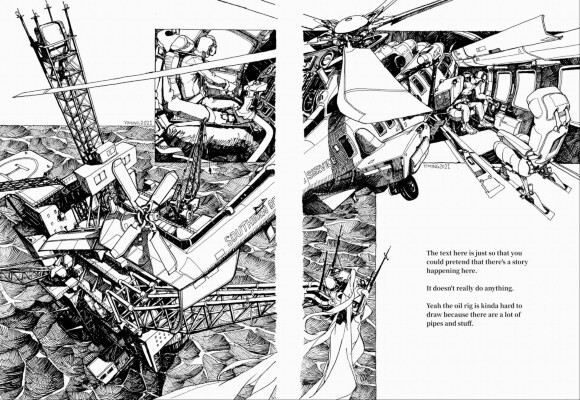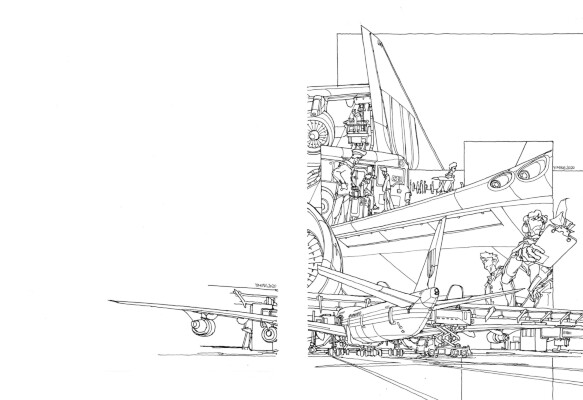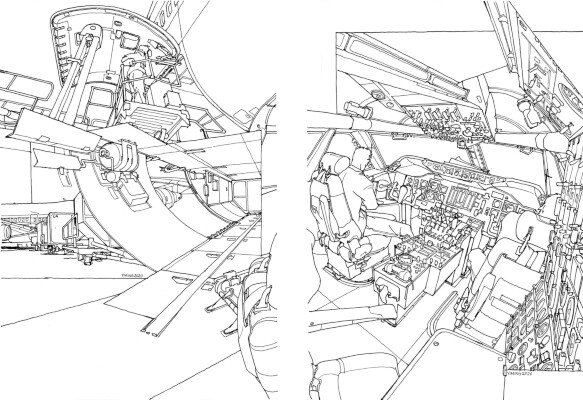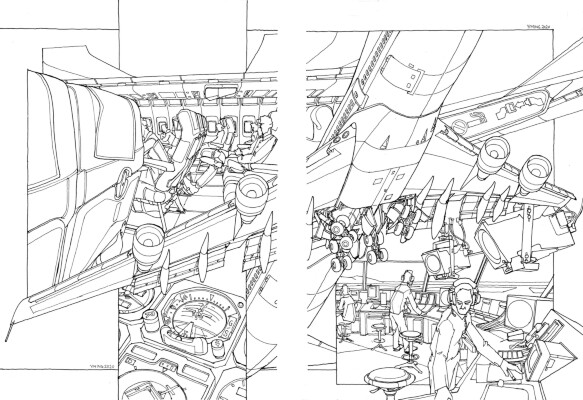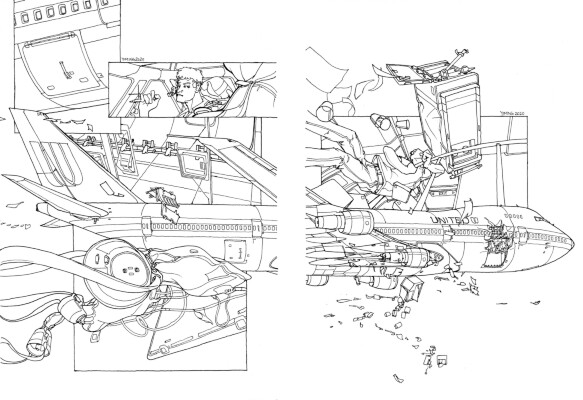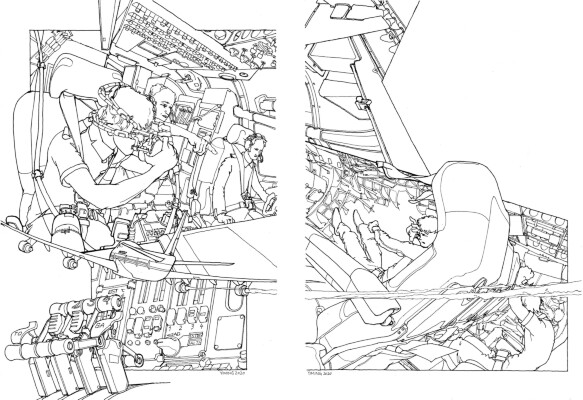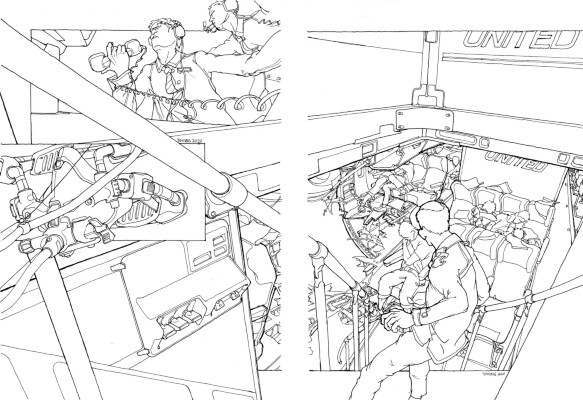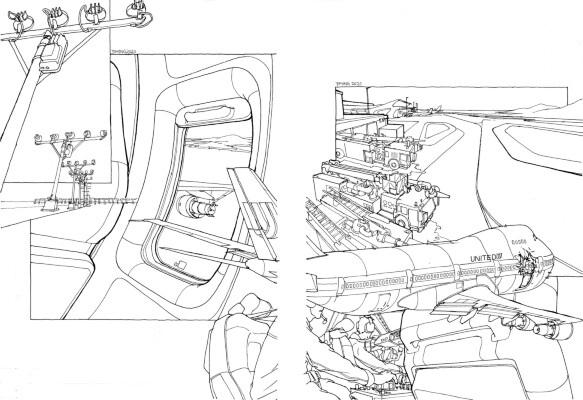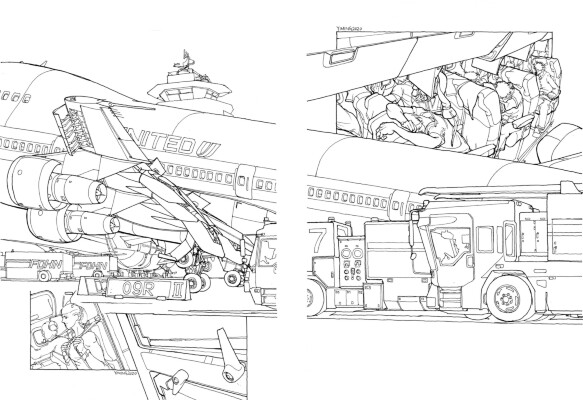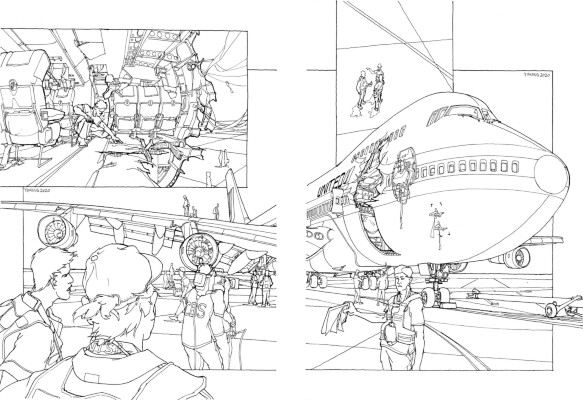Thread | ||||||||||||||||||||
| ||||||||||||||||||||
| #17 | Comic: Flight 811The narration is referenced from Wikipedia↗。 1United Airlines Flight 811 was a regularly scheduled airline flight from Los Angeles to Sydney, with intermediate stops at Honolulu and Auckland. | |||||||||||||||||||
| #18 | 2Starting in Honolulu, Flight 811 was helmed by Captain David Cronin (age 59). At the time of the accident, Cronin had logged around 28,000 flight hours, including roughly 1,600 hours in Boeing 747 aircraft. Flight 811 was Cronin's penultimate scheduled flight before his mandatory retirement. The remaining flight crew consisted of First Officer Gregory Slader (48), and Flight Engineer Randal Thomas (46), and 15 flight attendants. The first officer and flight engineer had logged 14,500 flight hours and 20,000 flight hours, respectively. | |||||||||||||||||||
| #19 | 3Flight 811 took off from Honolulu International Airport at 01:52 local time, with 337 passengers and 18 crew members on board. During the climb, the crew made preparations to detour around thunderstorms along the plane's track; the captain anticipated turbulence and kept the passenger seatbelt sign lit. | |||||||||||||||||||
| #20 | 4The aircraft had been flying for 17 minutes, as it was passing from 22,000 to 23,000 feet (6,700 to 7,000 m), when the flight crew heard a loud "thump", which shook the plane. About a second and a half later, the forward cargo door blew off. It swung out with such force that it tore a hole in the fuselage. Pressure differentials and aerodynamic forces caused the cabin floor to cave in, and 10 seats (G and H of rows 8 through 12) were ejected from the cabin. All eight passengers seated in these locations were killed, as was the passenger in seat 9F. Seats 8G and 12G were unoccupied. A gaping hole was left in the aircraft, through which a flight attendant, Mae Sapolu in the business-class cabin, was almost blown out. Purser Laura Brentlinger hung on to the steps leading to the upper deck, and was dangling from them when the decompression occurred. Passengers and crew members saw her clinging to a seat leg and were able to pull her back inside the cabin, although she was severely injured. | |||||||||||||||||||
| #21 | 5The pilots initially believed that a bomb had gone off inside the airliner, as this accident happened just two months after Pan Am Flight 103 was blown up over Lockerbie, Scotland. They began an emergency descent to reach an altitude where the air was breathable, while also performing a 180° left turn to fly back to Honolulu. The explosion damaged components of the on-board emergency oxygen supply system, as it was primarily located in the forward cargo sidewall area, just aft of the cargo door. The debris ejected from the aircraft during the explosive decompression damaged the Number 3 and 4 engines. Engine 3 was experiencing heavy vibration, no N1 tachometer reading, and a low exhaust-gas temperature (EGT) and engine-pressure ratio, so the crew shut it down. At 02:20, an emergency was declared and the crew began dumping fuel to reduce the aircraft landing weight. The N1 reading of engine number 4 soon fell to almost zero, its EGT reading was high, and it was emitting flames, so they shut it down, as well. Some of the explosively ejected debris damaged the right wing's leading edge, dented the horizontal stabilizer on that side, and damaged the vertical stabilizer. | |||||||||||||||||||
| #22 | 6During the descent, Captain Cronin ordered Flight Engineer Thomas to tell the flight attendants to prepare for an emergency landing, but he was unable to contact them through the intercom. He asked the captain for permission to go down to find out what was happening, and he agreed. Thomas saw severe damage immediately upon leaving the cockpit; the aircraft skin was peeled off in some areas on the upper deck, revealing the frames and stringers. As he went down to the lower deck, the magnitude of the damage became apparent as he saw the large hole in the side of the cabin. He returned to the cockpit and reported that a large section of the fuselage was open aft of the Number 1 exit door. He concluded that it was probably a bomb, and that considering the damage, exceeding the plane's stall speed by more than a small margin would be unwise. | |||||||||||||||||||
| #23 | 7As the airliner neared the airport, the landing gear was extended. The flaps could only be partially deployed as a result of damage sustained following the decompression. This required a higher than normal landing speed around 190–200 knots (220–230 mph; 350–370 km/h). | |||||||||||||||||||
| #24 | 8Captain Cronin was able to bring the aircraft to a halt without overrunning the runway. About 14 minutes had elapsed since the emergency was declared. All the remaining passengers and flight attendants exited the aircraft in less than 45 seconds. Every flight attendant suffered some injury during the evacuation, ranging from scratches to a dislocated shoulder. | |||||||||||||||||||
| #25 | 9Despite extensive air and sea searches, no remains of the nine victims lost in flight were found at sea. Multiple small body fragments and pieces of clothing were found in the Number 3 engine, indicating that at least one victim ejected from the fuselage was ingested by the engine, but whether the fragments were from one or more victims was not known. Based on developments after it issued its original report in April 1990, the NTSB issued a superseding accident report on March 18, 1992. In this report, the NTSB determined that the probable cause of the accident was the sudden opening of the cargo door, which was attributed to improper wiring and deficiencies in the door's design. It appeared in this case that a short circuit caused an unordered rotation of the latch cams, which forced the weak locking sectors to distort and allow the rotation, thus enabling the pressure differential and aerodynamic forces to blow the door off the fuselage; ripping away the hinge fixing structure, the cabin floor, and the side fuselage skin; and causing the explosive decompression. | |||||||||||||||||||
2020/09/20 10:01:00
2022/08/15 17:42:36 | ||||||||||||||||||||
NewslettersEnter your email: | ||||||||||||||||||||
